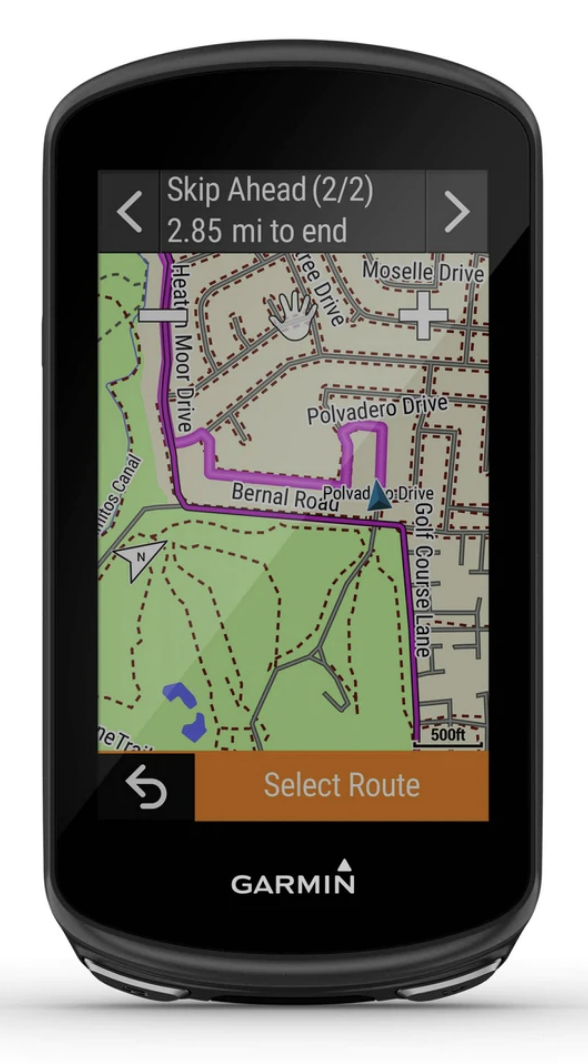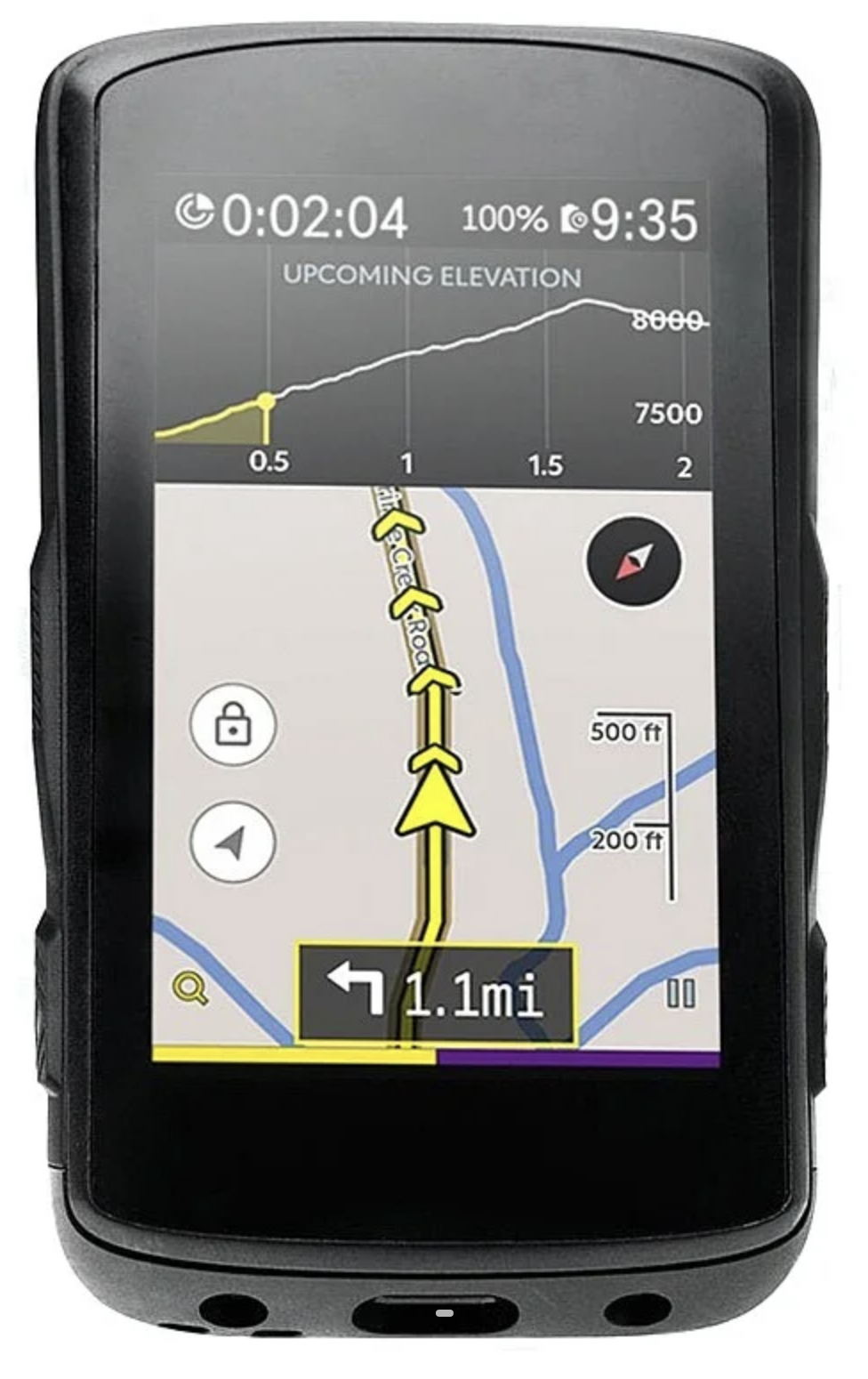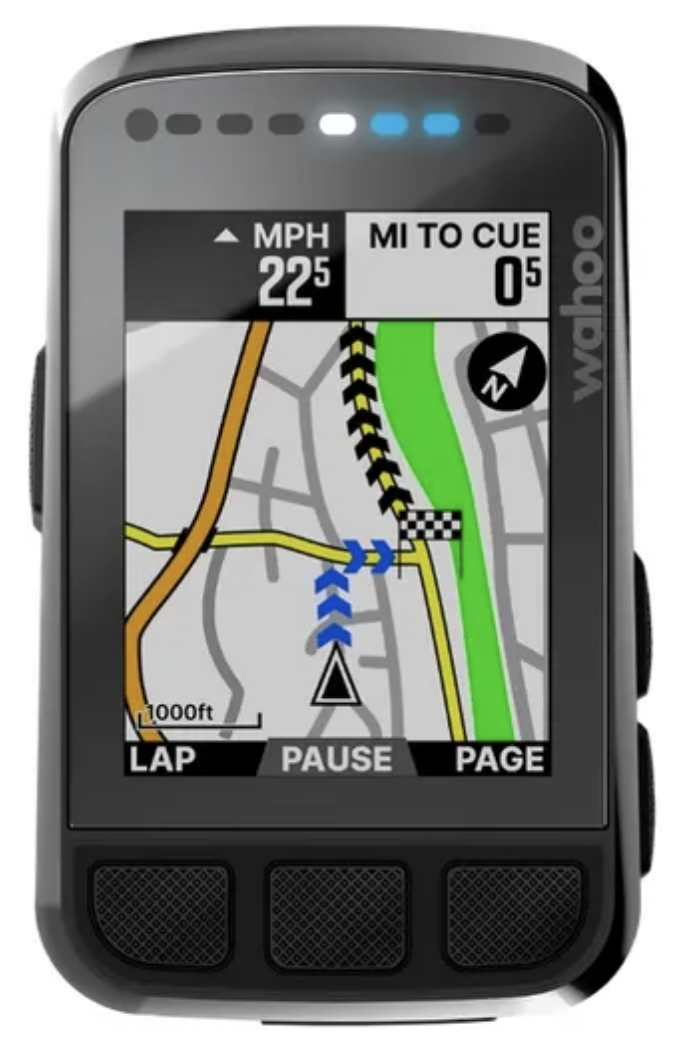Most of us have been there at some point. Caught out. Perilously underprepared. Blindsided by unexpected conditions, tricky mechanicals or unforseen turns in weather. It can be terrifying, dangerous or worse. When things go catastrophically sideways, experience, cool heads and a baseline standard of preparedness can keep situations that are merely uncomfortable from veering into life-threatening territory.
Banner & above photo by Shaun Daley
To be clear, this is not intended to be a how to fix a flat guide or a primer on wilderness survival, rather the idea is to provide some broad-stroke best practices and general rules of thumb as they relate to riding bikes outside the range of easy access and cell service. We recognize that everybody has a different level of experience and threshold for adversity. What I think to bring on a ride may differ wildly from what you think to bring on the very same ride, much of it based on the particulars of our experience, familiarity and trust in weather forecasting apps, regional awareness and a fair amount of gut instinct.
The truth of the matter is the more you get out, the more situations will arise that require self-reliance, backup gear and contingency plans. This holds true for everyone. Racing experience, even at the elite level, within controlled, supported events doesn’t grant anyone a pass in the backcountry. It won’t matter if you’re fast when it’s 40 degrees, raining and you didn’t bring a jacket or gloves. What you prioritize within your kit vs. what you leave behind can be a matter of serious consequence, particularly in shoulder seasons at elevation when weather conditions tend to swing the widest.
Know Before You Go
Weather apps like EpicRideWeather remove a considerable amount of guesswork from the equation. An ultra-personalized forecasting app, EpicRideWeather syncs with Ride w/ GPS, Strava, Trailforks, Komoot, and more, allowing users to upload custom routes and set date/time parameters. The app will then generate predictive temperature, precipitation, cloud cover, wind and elevation data for the course of your intended ride. It even provides wind direction mapping for the entire route.
Weather Underground is another solid app to round out your weather forecasting toolkit. Weather Underground functions as a wide-scope gauge on what weather is going to be doing over the course of a day or week in a particular area. It provides hyper-localized readings with hour-by-hour forecasting of temperature, precipitation, wind and humidity data with advanced real-time storm system mapping. Localized AQI data is another of Weather Underground’s critical metrics, which is becoming increasingly necessary with wildfire seasons impacting more regions more frequently each year.
Another helpful resource are NOAA’s interactive snow overlay maps. They provide an accurate snapshot of realtime snow levels and depths anywhere in North America so you can have a reasonable understanding of which routes and areas are accessible and where you’re going to run into snow.
One of the drawbacks of relying solely on apps like Weather Underground, DarkSky or your iPhone’s weather app is that they base readings on a single point, typically a population center, which won’t be reflective of actual conditions and microclimates at higher elevations or in mountainous backcountry areas. The clear advantage of EpicRideWeather is that forecasts are based on your actual itinerary rather than simply reading from the nearest town, which again, often fails to reflect changing conditions at higher elevations. If you could only have one weather app for ride forecasting, EpicRideWeather is the one you want.
Navigation
A dedicated GPS head unit is essential for backcountry navigation. Don’t try to use your phone if you’re going in deep. While the idea may seem appealing at first, you won’t want to use your smartphone to navigate much more than commutes or rides around town. It’s technically possible, but not terribly practical for long days. Additionally it is recommended in backcountry applications to keep your phone on reserve as a backup, with the route downloaded for offline use if your primary device fails. Trust us, for deeper backcountry riding, go with a dedicated head unit.
Garmin, Wahoo and Hammerhead are the dominant GPS navigation platforms, each with their own proprietary ecosystem including route management dashboards, data field layouts, tracking metrics and sync features. In terms of setup and user-friendliness, Wahoo tends to be the Mac to Garmin’s PC with relative newcomer Hammerhead landing somewhere in the middle with an ultra-slick display and supercharged operating system. All of them use some form of OSM (Open Street Maps) a global open-source base mapping system, which includes roads, trails and geographical features in varying degrees of detail.
In terms of route creation and planning, Ride With GPS is the only game in town. Their advanced array of routing tools, map overlays, global/personal heatmaps, points of interest, route libraries and management system easily make it the best route creation and sharing platform that currently exists. Ride With GPS allows users to build, edit, modify and easily share routes with a high degree of precision, including detailed points of interest, editable custom cues and photos embedded within the routes themselves. Particularly helpful are the heatmap and surface type features which provide a snapshot into how well-traveled a particular road, trail or segment is and what to anticipate in terms of surface type — paved tarmac, gravel roads or singletrack.
One of the most critical utilities in the Ride w/ GPS playbook is the ability to reliably navigate routes offline, without a data connection — a fairly impactful feature considering how much adventure riding happens beyonds the reach of cell service. In most cases it simply serves as peace of mind to have a couple variations of a route downloaded to your phone for offline use as backup in the event your GPS head unit fails.
Backcountry Adventure
So where does gravel end and adventure riding begin? It’s rather a fluid continuum, but if you ask us, the delineation has less to do with actual riding surface and is more about variable conditions, range and remoteness of terrain with an undefined sense of boundaries for the experience. All this to say plenty of adventure riding is, of course, possible within city limits, so for our purposes here, backcountry will be the operative idea.
So how to define backcountry?
Merriam-Webster uses terms like hinterland and outback, but a good rule of thumb is if your riding includes a mix of National Forest roads, singletrack trails or gated areas inaccessible to cars and outside the range of cell service, you’re backcountry enough and probably well within our loose definition.
It may be obvious, but it does warrant mention that most of these recommendations will overlap with backcountry hiking truisms. Common sense stuff like knowing how to fix routine problems and having the means to do so is essential – since we’re talking bikes, addressing flats, shifting, braking and mechanical issues should be well within your wheelhouse. If you are venturing into unknown territory and haven’t ridden a particular route before, it is highly advisable to go with other people and stick together. Getting lost, separated or waylaid deep in the backcountry alone, even for experienced riders, can turn dangerous very quickly.
What’s In Your Kit?
Extra capacity is key for big days, which is why you see a lot of riders with fannypacks, framebags, barbags and saddle packs. Much of it is going to be seasonally specific, so rather than trotting out a preferred gear list, we’ll simply approach categorical basics you may want to consider and why — guided by the mantra that it is almost always better to have something and not need it than to need it and not have it.
Bags
Fannypacks are ideal for single-day adventures. There is a reason why mountain bikers use them — they provide plenty of flexible capacity for nutrition, layers and essentials. By design, they keep weight set back, low and out of the way and as such, won’t affect the handling of your bike. My go-to is a High Above Lookout, handmade in Bellingham, WA. Key features are the Lookout’s multiple compartments, padded lumbar support, internally-structured space and external shock cord loops for packing extra layers. The Lookout also comes with a removable water bottle holster which is great when cage space is at a minimum.
Half framebags offer a few distinct advantages for longer form riding, allowing a lower center of gravity and a bit more structured capacity than most fannypacks. They also keep gear weight off your body, which tends to reduce fatigue over long days. One of the biggest perks is that they keep food and gear easily accessible while riding. Both the Outer Shell Half Framebag and Apidura Expedition feature dual-sided waterproof zip entry, internally structured compartment space and allow the use of both standard bottle cage positions on most bikes.
Layers
One of the best things you can do is invest in lightweight, packable layers you’ll barely notice in your ride kit. The rain jacket that works best is the one you brought with you rather than the one you left at home because it takes up too much space. This is particularly important in shoulder seasons with variable weather. It may be 65 and sunny in town, but up on the ridge where you’re headed it could very well be socked in and pissing rain. Lightweight rain jackets also make great extra layers when it’s dry. Microclimates are everywhere in the mountains and it always get colder with elevation, so the extra layers you pack just in case are often the ones that save your ass when the weather turns.
My absolute go-to over the past year has been the ultra-minimal Rapha Explore Lightweight Jacket. It’s a DWR-treated just in case layer that is so low-profile it comes on just about every ride. About the size of a dinner roll, it weighs in at a mere 78 grams.
Rapha’s Brevet Gore-Tex Rain Jacket also weighs next to nothing with an extremely minimal pack volume which is great when space is at a premium. The Brevet edition features a fully waterproof 2L Gore-Tex Paclite shell, internally taped seams and reflective chest and armband striping for 360 degree visibility.
SHAKEDRY jackets from Gore Wear revolutionized the ultra-light rain jacket game a few years back. SHAKEDRY is a proprietary stretch fabric from Gore which is fully waterproof and yet so light, it won’t feel like you’re wearing or carrying an additional layer. They pack down to the size of a doughnut, so it is a no-brainer to throw in your kit.
Merino base layers are highly recommended year round. Merino is ridiculously versatile and kinda does it all — unparalleled moisture management and cooling in summer heat and quasi-magical insulating properties in deep winter conditions. The fabric’s wide temperature range, moisture-wicking, and odor-resistant qualities are the stuff of legend, unsurpassed by most synthetics. The best part? Merino still insulates and stays warm when soaking wet, which makes it great for socks as well. Layer beneath a waterproof shell for a modular system, or simply bring as a backup if the weather turns.
Gloves
In shoulder seasons (early spring through late fall) it is always a good idea to bring two pair of differently weighted gloves. For big adventure days, try a summerweight full-finger MTB glove like the Fox Ranger and a more insulated, waterproof knit like Sealskinz or Showers Pass Crosspoint.
This provides three distinct options: summerweight for the majority of the ride, the insulated knit for high elevation chill or early mornings and the potential to double-up if push comes to shove. Odds are most of the time you won’t need the second pair but you will be glad they are there when you need them.
Trailside Triage: what could possibly go wrong?
Your trailside triage kit is your opportunity to ruminate on that question and ultimately dazzle your ridemates with your steely sense of self-reliance! Most of the time, these items are passively along for the ride, but when that time comes — and it will come — you’ll be glad they are there.
Spare Tube + Levers — a spare tube and tire levers should always be in your kit even if you’re running tubeless. Who can predict when that lusty shard of ice age basalt meets the supple sidewall of its dreams? If you alternate between different tire and wheel sizes or multiple bikes, it is good practice to label your tubes with sharpie and masking tape so you’ll know, at a glance, what size you’ve got. Pro-Tip: store your spare tubes inside small ziploc-style baggies and replace every so often. Rough roads tend to jostle the contents of your pack and will wear holes in unprotected tubes over time.
Tubeless Repair — tubeless is great until it isn’t. In the course of every tire’s life there will inevitably be some punctures that sealant alone cannot handle. For these you need a plug. Dynaplug makes a range of pre-loaded dart plug kits which function fantastically. Other folks swear by Lezyne-style ‘bacon strip’ plugs. Whichever method you choose, it is recommended to familiarize yourself with the process so your first time isn’t a mad scramble to keep your sealant from bleeding out deep in the backcountry.
Multi-Tool — these come in all shapes and sizes, but should contain, at a minimum, a range of common hex, Torx, phillips and flathead driver bits. At the full-featured end of the spectrum, the 8-Bit Kit from Wolf Tooth Components is a modular group of multi-tools designed to work together to solve most trailside fixes. The kit includes the aforementioned driver bits plus pliers, spoke wrench, valve core, chain tools, utility blade, integrated tubeless repair kit and tire levers. Sure it’s a little expensive, but for something you carry on every ride, a solid multi-tool is money well-spent.
Blackburn’s Big Switch Ratchet Multi-Tool is a super convenient kit which employs a miniaturized ratcheting handle system with interchangeable bits. This allows quite a bit more leverage and reach into tight spaces and features a full range of hex, Torx and screwdriver bits with a chainbreaker, brake pad spreader, spoke wrenches and valve core tool.
Pump — you’re going to need something to pump those tiremeats back into shape at some point, so it may as well be reliable. Some folks like the classic frame pump like this one from Silca. If frame pumps aren’t your bag, there is certainly something to be said for the versatility of compact hand pumps like Lezyne’s Pressure Drive, which conveniently threads on via ABS flex hose, reducing pressure on delicate valve stems whilst pumping.
Superglue — a utilitarian tubeless fix, an external layer of superglue can often be just the trick that helps your sealant do its thing. Also works great in and around a plug to help the whole assemblage set up. Try a poultice of dust and sand in the drying superglue to help it set up faster.
Quick-Link — pretty self-explanatory. If your chain breaks or is somehow mangled beyond functionality, a quick link can put it back together and get you back on the road. Weighs literally nothing and takes up less space than a dime. No reason not to carry one.
Tire Boots — the size-to-utility ratio of the humble tire boot cannot be overstated. Again, with the weight and footprint of a single dollar bill, a proper tire boot can mend, patch, support and sustain even monster sidewall or tread gashes for the remainder of your ride. Don’t leave home without ‘em. Park Tool makes a 3-pack of incredibly strong adhesive tire boots which can be trimmed to size when field dressing your tirewounds.
Chain Lube — long days in dry, dusty conditions can leave your drivetrain wanting for a touch of lube. Many manufacturers like Wolf Tooth Components will offer a tiny 15ml size bottle to stash in your ride kit.
Spare Shift Cable — those running mechanical groupsets would do well to include a backup shift cable on longer, deeper rides. The weight-to-consequence ratio skews heavily toward the latter in this case and inclusion can easily salvage an otherwise toasted ride.
Spare Derailleur Hanger — spend any amount of time off the beaten path in the Northwest and you’ll quickly come to understand the vulnerability of your rear derailleur. They are susceptible to rogue sticks, twigs, branches and all manner of errant backcountry debris. If your frame uses a removable derailleur hanger, which most modern carbon and higher-end steel frames do, chances are it is made from soft aluminum which is designed to flex and break away, ideally protecting your RD from serious structural damage. Sourcing a backup to bring on deep backcountry rides can mean the difference between riding or walking out if something goes wrong. Pair with a quick-link for spicy notes of self-reliance and a strong, savory finish.
Water Filters
Seasonal adventure prep goes both ways. We meticulously consider rain layers, gloves and insulation from all things wet and cold but equally important is being able to handle hot, dry and fully exposed deep summer conditions safely. Running out of water usually means game over for any ride of consequence. Without services for water access, it is recommended to bring a portable filter on rides longer than 40-50 miles. Obviously the warmer the weather, the more critical water treatment becomes. Check your map overlays carefully to identify creek and stream crossings along your itinerary for potential filtering spots.
A wide range of modern filter options make it easy to dodge nasties like protozoa, bacteria, viruses, and giardia. While most clear running creeks in wooded or natural areas can be reliably filtered, it is best to avoid ponds, larger rivers or water sources in farmland or agricultural areas which are often contaminated with chemicals and livestock runoff.
The current generation of miniature squeeze filters travel incredibly light, take up minimal space, and turn most clear-running creeks into reliable water sources. The Sawyer squeeze filter system is one of the simplest and most prevalent among the adventure set, consisting of a small cylindrical hollow fiber filter and expansion bladder. The Sawyer also comes in a mini version weighing in at a mere 1.4 oz. Expansion bladders are available in a range of sizes from 16-32 oz.
The MSR Trailshot is a super simple pump-style filter requiring zero setup which can be operated with one hand. Simply float the intake in a water source and squeeze the rubberized pump and the water filters right into your bottle. The Trailshot also allows users to drink clean water straight from the nozzle.
One of the more innovative water treatments on the market is the Steripen Ultralight UV Water Purifier which uses ultraviolet UV-C light rays to kill bacteria in less than 90 seconds. The Steripen is USB chargeable, treating 1L per application, with roughly 50 treatments per charge.
EMERGENCY COMMUNICATION
For riders pushing deeper into the backcountry, units like the Garmin InReach or InReach Mini provide peace of mind, enabling reliable satellite communication, two-way messaging, location sharing and emergency SOS capabilities anywhere in the world regardless of cell signal. They also provide topographical mapping and point-to-point navigation as well, which is a solid plan B if something happens to your primary GPS unit. Based around a subscription service, you simply choose the plan that works for you and you’ll always have a backup plan in case things go south.
Of course there is always the chance something beyond your control will require outside assistance, but a little bit of prep and the right tools go a long way toward increasing your self-reliance both in the backcountry and any time you’re out on the bike. That said, there isn’t really a substitute for firsthand experience, familiarity with your gear or understanding your terrain and conditions. The more you do it, the better you’ll get and the more comfortable you will become when things shift toward the uncomfortable.


































